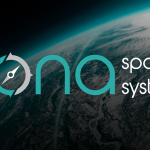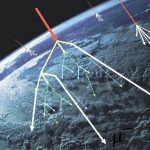Sputnik launched the satellite age 65 years ago and now swarms of constellations orbit the Earth, delivering new navigation and communications capabilities and services. Low Earth orbit (LEO) satellites are the next step in space-based innovation, but what are the steps necessary to make LEO positioning a reality?
Join us for a webinar on how PNT is enabling LEO and enabled by, the commercialization of space. Wednesday, December 14, 2022 1:00 PM – 2:30 PM EST. Register Here.
Existing positioning, navigation and timing (PNT) systems were designed for terrestrial use but can operate in space as well. Experts will look at how GNSS positioning in space is similar to and different from terrestrial positioning, as well as what RF signals in space are used for PNT, such as from medium Earth orbit (MEO) and geostationary constellations.
What you will learn:
- The effects of orbital height on the space vehicles and transmitter power
- Considerations for frequency selection
- Potential roles for 5G “base stations” in space
- Specific challenges of using GNSS for positioning in space
MEO and LEO constellations can complement each other for PNT and other services and the growing number of receivers orbiting the Earth can lead to new opportunities even beyond positioning, while overcoming the technical challenges of operating in a harsh and increasingly crowded space environment.
The panelists:

Stig Pedersen, Vice President and General Manager of Antcom at Hexagon’s Autonomy & Positioning division
Stig Pedersen has over 30 years of experience in the GNSS industry. Since 2019 he been General Manager of Antcom, a subsidiary of Hexagon specializing in the development and manufacture of antennas, notably for the Defense, Air and Space sectors. Stig’s experience spans across the Consumer and Professional GNSS sectors. Early in his career while at Magellan he was on the team that developed the first sub-$500 handheld receivers, the Meridian and the Trailblazer. As GIS Business Director, Stig helped launch Leica’s first GIS product line.

Sandy Kennedy, Vice President of Innovation for Hexagon’s Autonomy & Positioning division
Sandy Kennedy is vice president of innovation at Hexagon’s Autonomy and Positioning division. She is responsible for directing applied research activities to support the vision of: Autonomy and Positioning – Assured. Drawn to the University of Calgary for its geomatics engineering program (and proximity to good ski hills), she completed both her B.Sc. and M.Sc. degrees there, in 2000 and 2002 respectively. She has spent a fascinating 17 years in R&D at NovAtel and A&P, developing leading edge positioning technology and working with a diverse, global customer base. Her experience includes GNSS/INS integrated systems, GNSS receiver design with an emphasis on both precision and resilience, and precise multi-frequency multi-constellation positioning.

Logan Scott, GNSS/GPS Expert
Logan Scott is an expert consultant in systems/signal processing in advanced RF systems including GPS, RFID, navigation, communications, radar, and emitter location systems. A Fellow of the Institute of Navigation and holder of 46 US patents, he is the inventor of the delayed key concept used in the Chips Message Robust Authentication (CHIMERA) signal for navigation-signal authentication. For the last several years he has been active in signal designs for the NTS-3 program and others.
Webinar sponsored by Hexagon’s Autonomy & Positioning division.

Unable to attend the live webinar on December 14? REGISTER TODAY and you will receive an invitation to view on-demand at your convenience.






